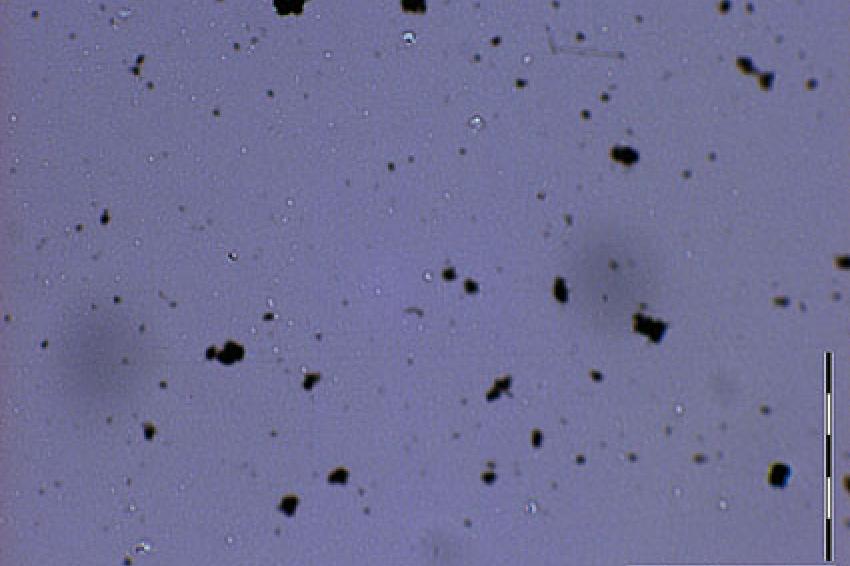Dispersing Carbon Nanotubes
A Challenge on the Way to Functional Coatings
When in 1991 carbon nanotubes (CNT) were first observed by Prof. Iijima, no one would ever have thought that this new form of carbon would become one of the most exciting materials in the 21st century. Starting out as a curiosity, production capacity has increased extremely in the last few years. Nowadays hundreds of tons are produced to meet the market demand.
Depending on the synthesis and reaction parameter, single-wall carbon nanotubes (SWCNTs) as well as multi-walls (MWCNTs) can be produced. While single-wall carbon nanotubes exhibit superior properties, their synthesis is extremely complicated and yields are small. Because of this, single-wall carbon nanotubes are still very expensive and are mainly used in high-tech electronic applications or in academic research. Consequently, most companies focus on multi-wall carbon nanotubes for industrial applications in coatings and plastics.
Characteristics Of Carbon Nanotubes
Carbon nanotubes can be described as sheets of graphene that are rolled to form a tube. In the case of MWCNTs, several independent tubes are grown in concentric circles. Their outer diameter is usually in the range of about 20 nm, about 2,000 times thinner than a human hair. Their length can be around 10 µm, and thus their aspect ratio can be in the range of a few hundreds to thousands. Due to this and in respect of their low density, huge surface areas of a few hundred m2/g are usually obtained. We can imagine one gram of material exhibiting a surface area similar to an average semidetached house.
Production Of Carbon Nanotubes
Because of these parameters, carbon nanotubes want to reduce their surface energy, and tend to easily agglomerate in the form of bundles and skeins. This entanglement is also encouraged during their synthesis. One way to produce carbon nanotubes begins with catalyst particles and a carbon source at elevated temperature and pressure. The catalyst is chosen from metals, which are able to form carbides. Once the catalyst is saturated with carbon due to the continuously increasing amount of carbon source, graphite in the form of carbon nanotubes starts to grow from the catalyst surface. This process can run continuously until carbon nanotubes with lengths of several micrometers are formed and such tubes are separated from the reactor. While growing, the tubes often change their direction and, due to the high filling density inside the reactor, tubes start to become entangled with other tubes to form large and highly agglomerated aggregates
Promising Material
Carbon nanotubes are gaining in interest due to the continuously increasing demand from the market for functional coatings and plastics. In the enduring effort to save material as well as energy, most applications are looking for thinner coatings and lower weight plastics with better mechanical properties. Also electrical or thermal conductivity is necessary for many different applications. Imagine you can exchange a copper cable for a low weight plastic compound, which not only saves weight but also costs. Or consider plastic composites that offer the same or better mechanical properties as steel. Such composites would enable parts to be produced by melt compounding instead of complicated mechanical processes.
Dispersion Into Individual Tubes
We are just beginning to turn these dreams into reality, and we need to obtain the maximum performance from these carbon nanotubes. To use the unique properties of carbon nanotubes, one has to break off the agglomerates and disperse them into individual tubes. Otherwise, there would be no benefit in using them, for example, for mechanical reinforcement, because they cannot bring their high aspect ratio into account, as they are present in the form of agglomerates. Also where conductivity is concerned, carbon nanotubes need to be dispersed into individual tubes to achieve high conductivity even with a low concentration of tubes.
There are many ways cited in the literature for how to disperse carbon nanotubes into a matrix. Most procedures use high shear forces that can break the carbon nanotubes into short fragments during the dispersion process. Very often, dispersions of carbon nanotubes with a reduced length of up to a mere 200 nm are obtained. In such cases, the aspect ratio would have been reduced from about 1,000 to about 10, and the unique properties of carbon nanotubes would have been diminished.
Using The Right Additive
A better way to disperse carbon nanotubes is to use additives, which can help minimize the damage. First of all, one needs a suitable wetting agent to penetrate the agglomerates and help to disentangle the skeins. Such additives can bind to the surface of the tubes and will increase the distance between them. The process might be described as swelling up the skeins, and it becomes obvious that in such instances the tubes are easier to disentangle than if they remained in a hardly agglomerated form, where surface energy and inter-tube attraction is high. The second step, is to use the right amount of shear forces to disentangle the tubes and disperse them into the dispersion media. This will also lead to a reduction in length, but usually with much better results than by not using the right additive.
As a final and probably most important step, the now individualized carbon nanotubes need to be stabilized against reflocculation. In this case, only customized dispersing additives can bring long-term stability at low viscosities and high carbon nanotube concentrations.
Anyone who has ever tried to disperse carbon nanotubes knows the complications that can occur during the dispersion process. BYK has developed highly efficient wetting and dispersing additives, which exhibit high affinity to MWCNT surfaces and stabilize the tubes against re-agglomeration. This has enabled BYK to prepare dispersions in different media like solvents and water with up to 10 % MWCNT content.
Preliminary steps have been made to transform carbon nanotubes into functional coatings and the next few years will prove if this material can fulfill the huge expectations.








